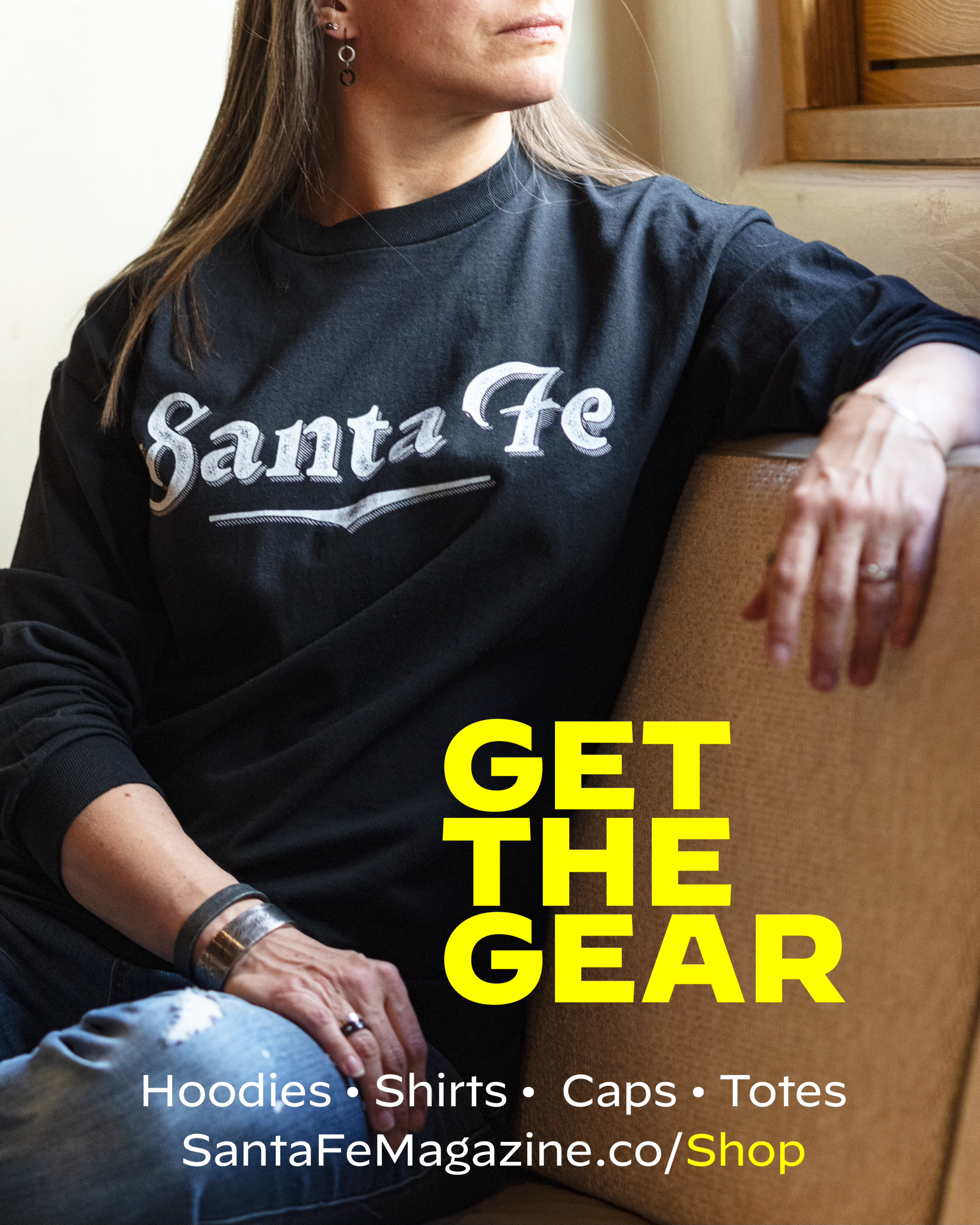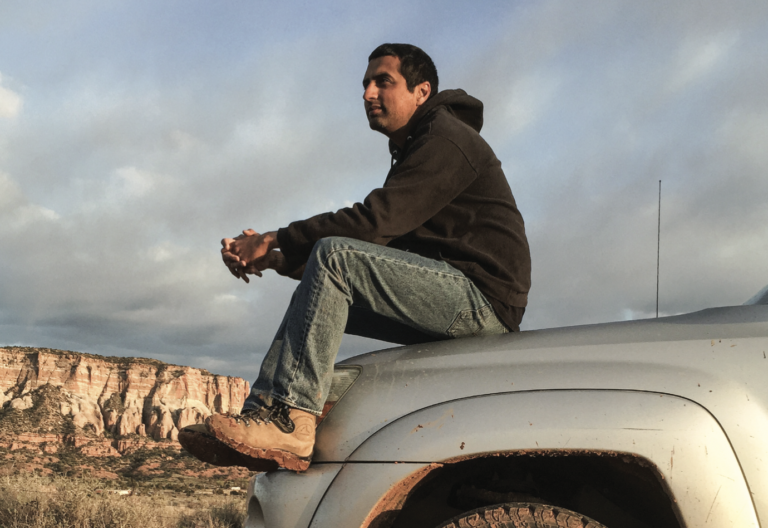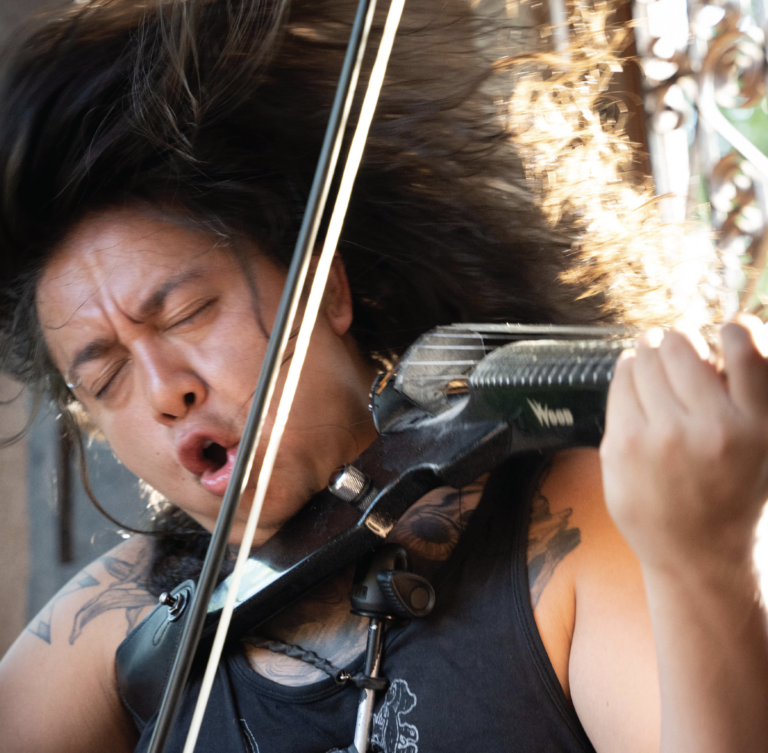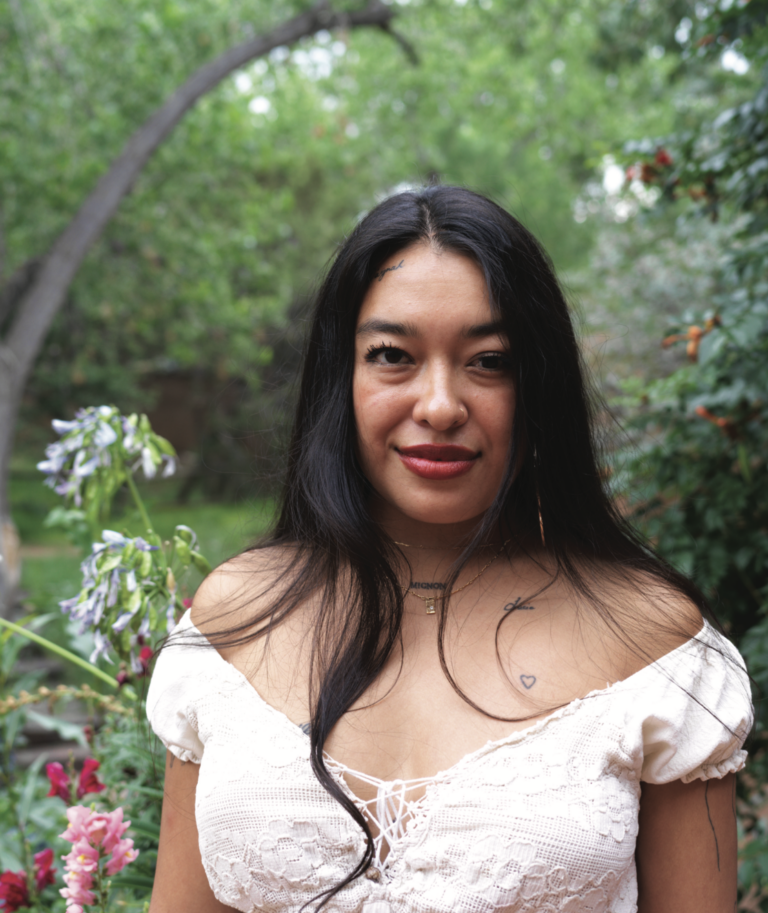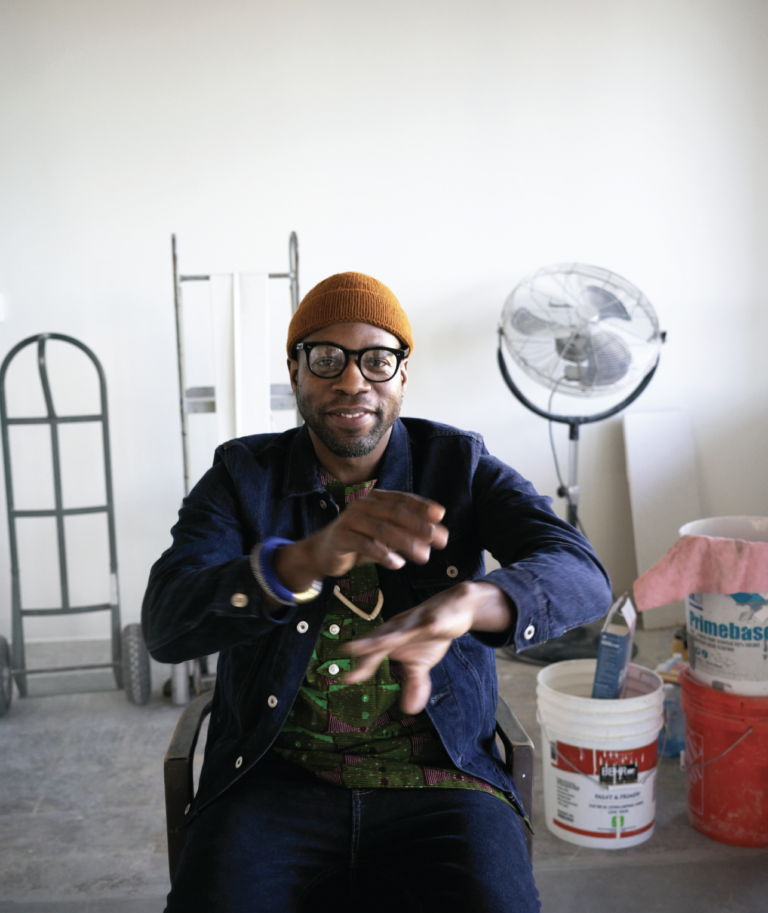AFTER SURVIVING A TRAUMATIC EXPERIENCE on a movie set in Middle-of-Nowhere, New Mexico, Lara Dale’s love for film was tarnished — but not destroyed. She’s a foley artist now, producing sound effects for films.
Her company, Footvox Studio, is credited with films like Twilight: Eclipse and 12 Years a Slave. But the trauma stuck with her. She needed to do something about it. And she did. She founded the Safe Sets Initiative, with an eye on making the film industry, in New Mexico especially, a safe work environment. We sat down to talk about her difficult past, her positive intent for the future —and a lucky thrift store find.
Do you want to talk about what happened to you, that spurred your initiative?
I am a trauma survivor of a very ruthless film production. It was 1989, and I was supposed to get my SAG card, go to LA, and be this actress. I got a role to film at the Puye Cliff Dwellings. It’s in the middle of nowhere. They forced me to do a sex scene that was not in the script.
I had brought my boyfriend with me because I was terrified. And when we decided we needed to get out of there, they tried to trap us. The entire crew came after both of us. We were in our vehicle, and they were on the roof.
When that happens, you can’t even process what’s happening to you. You’re just trying to get away. We had to escape a barricaded exit. It was very terrifying and traumatizing.
But I love film. I was part of the New York City independent film scene back with Spike Lee and Jim Jarmusch. So, I have this tremendous idealism for film and what it’s capable of.
That experience was in the stone ages. But the behavior hasn’t stopped. It makes me so angry that this still happens. So I decided to found the Safe Sets Initiative, to focus on sexual harassment at remote shooting locations. Most of Hollywood’s shoots are in locations where you could run down the street, knock on someone’s door, get help. Many films in New Mexico are in the middle of nowhere, potentially without cell phone service. I feel like that’s the danger with predatory film production companies.
As Hollywood is cracking down on sexual harassment, urban centers are going to be less appealing to predatory productions. They’ll perceive us as they always have — as the Wild West, thinking they can do whatever they want. Safe Sets is out to make this the safest place to shoot in the country.
How?
What can we do to create a predator-proof environment? We need to start at the production level, before the producer even brings the director on board. My template is based on Ita O’Brien. She’s in England, diminishing sexual harassment in the entertainment industry, doing what nobody else is doing. She realized a long time ago in British theater that intimate scenes can leave actors open to painful experiences. And some actors are in plays that could have ten-year runs.
I remember her talking about a young gentleman experiencing a lot of physical aggression on stage, like tongue down the throat, inappropriate touching — all in front of an audience. And in a long-running play, this becomes a nightmare. She had asked him how he was doing, in what should have been a plum role. And he literally wanted to kill himself. He was as talented as could be, and he didn’t want to go another day with the intrusion of his boundaries on stage. If you break character, you don’t work again. So, you have to endure this escalating harassment, and you’ve got a ten-year run ahead. What used to be your dream is now your nightmare.
Ita realized these actors get put in these situations that slowly escalate. So she has on-set intimacy guidelines that start with the producer, establishing boundaries. She’ll come in, privy to the script, sometimes before they even cast, and sit there with a yellow marker and get the producer to identify what they think are intimate scenes. Oh, the sex scene, they’ll say. Then she says, Just, by the way, did you know on page 17, there’s an elderly person being bathed? That’s an intimate scene. And they could fall in the tub, so that requires some consideration. So she educates the producer. From the very top, before they cast a director. She’s creating this top-down, brilliant educational model.
Ita won’t allow the director to ever pull somebody off to the side at an audition or ask to see nudity at a first audition. Ita’s there to politely, sweetly say, I’m sorry, you don’t need to see the full body at this time. Set by set, production by production, she’s completely changing the culture of filmmaking. With her, at no point is the actor compromised, but at no point is the camera not getting what it needs.
And so you’ve got the trickle-down effect and the trickle-up effect happening. Once actors are empowered, they’re going to write this into their contracts, and they’re going to demand her or someone trained by her on set. The ripple effect is happening,
If I had my greatest wish, it would be that we could just, whole cloth, take what she’s doing and just plunk it right down in the United States. But old-guard Hollywood has pretty strong roots.
I imagine a feeling of security leads to better performances, which leads to more desirability as an actor, as a director.
That’s a beautiful comment. That’s the whole point.
Ita said something like, All I’m trying to do is show there is a win-win. That you get the shot you wanted, it wins awards, the actors feel completely empowered, they’re proud of their work. Everybody wins and it’s not hard and it’s not painful.
In transplanting what Ita’s doing, as the Safe Sets Initiative, are you a one-woman show?
Yeah, right now this is just total grassroots. But I’m not going to stop.
Let’s switch gears. Tell me about the coat. You found a famous person’s coat and listed it on your Etsy shop?
A foley artist uses all human generated sounds. I need props for that in my studio, so I’m constantly running to flea markets and stores. I’ve been doing foley now for 13 years. When I shop for sound props, people come up to me like, Why are you listening to that meat grinder? I’m kind of known for being the weird lady in the aisle who doesn’t look at things, but is swishing or slapping things, to hear them.
That particular coat, I think I found it at a thrift store. I just noticed the houndstooth — It was beautiful and had a really weird proportion. It was gigantic. The label was what got me first. It was tailored by Otto Perl in New York in 1989. He made it for billionaire David Koch, of the Koch brothers. Koch was 6’ 5” tall.
It turns out Perl had been a Holocaust survivor who fled to New York. He started tailoring, and did Leonard Bernstein’s suit he wore when conducting. I’m just in love with this because this guy is one of the great tailors, and I just pulled this coat off of a rack in New Mexico. It was probably used on some film set and just dumped.
Then I thought, I’m going to put this on my site for the max dollar amount that I can. Etsy maxes out at $50,000. And my thinking was, I just started this site – the shop is called VintastiqueBoutique – and I want to get attention to it. $50,000 will get attention to it. It’s been a pretty cool marketing thing.
How much did you buy that coat for?
I think I paid $30. It would be great if some wealthy dot-com person bought it, but I don’t have high hopes.
Selling that for $50k would help you nurture Safe Sets into a bigger machine.
Once the ball gets rolling, it’s going to run itself. That’s what Ita discovered. Once you establish the integrity of the movement and make sure that there are no holes in it, it does start to just sort of run itself.
Learn more at safe-sets.com
Photo Mark Shipman

